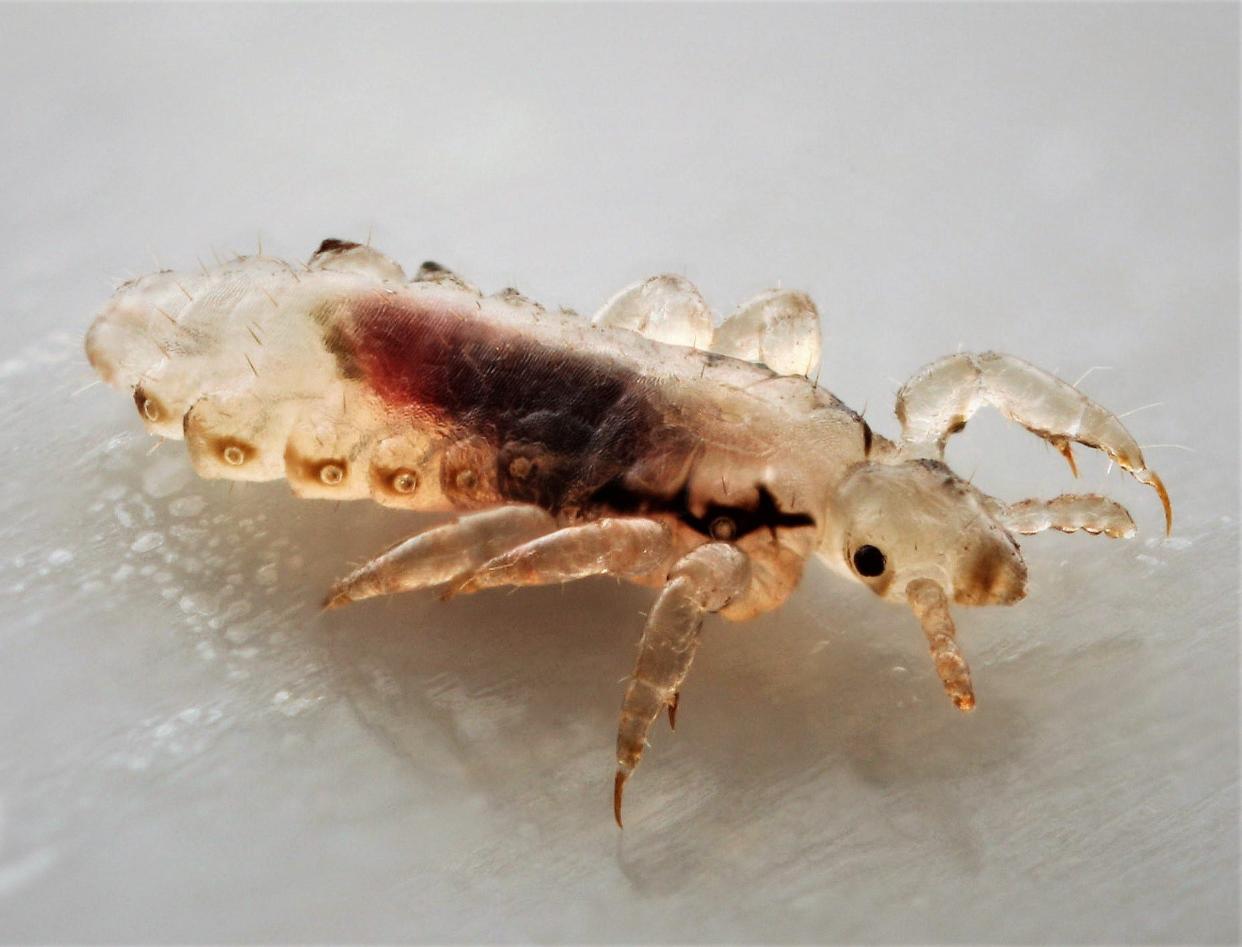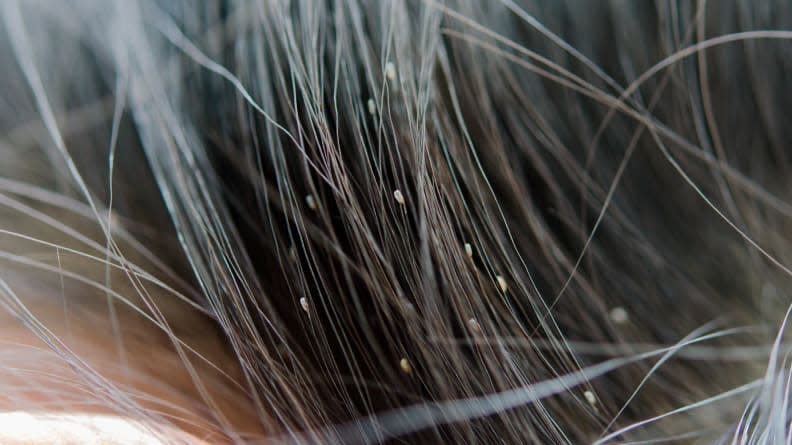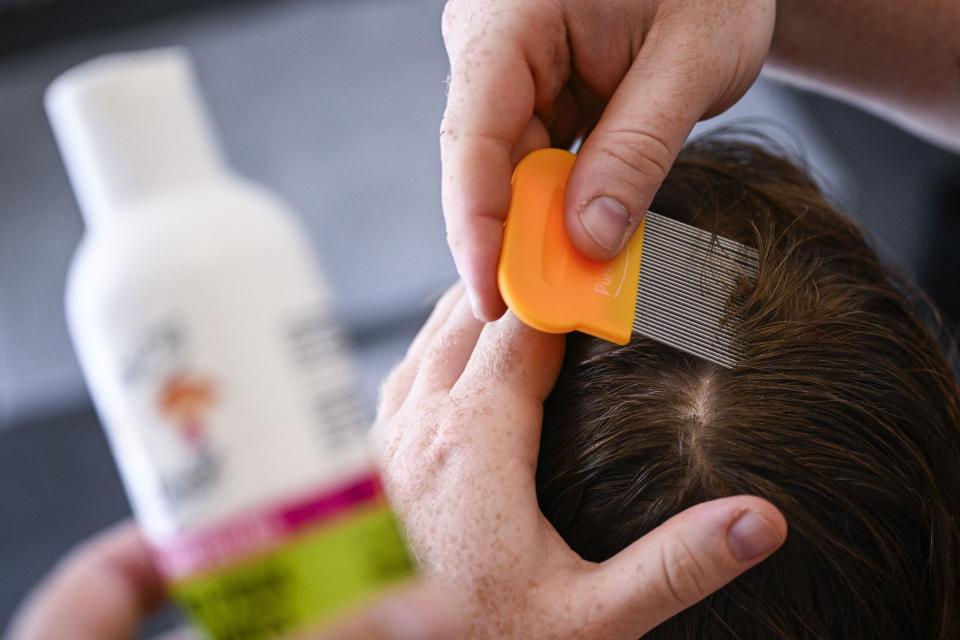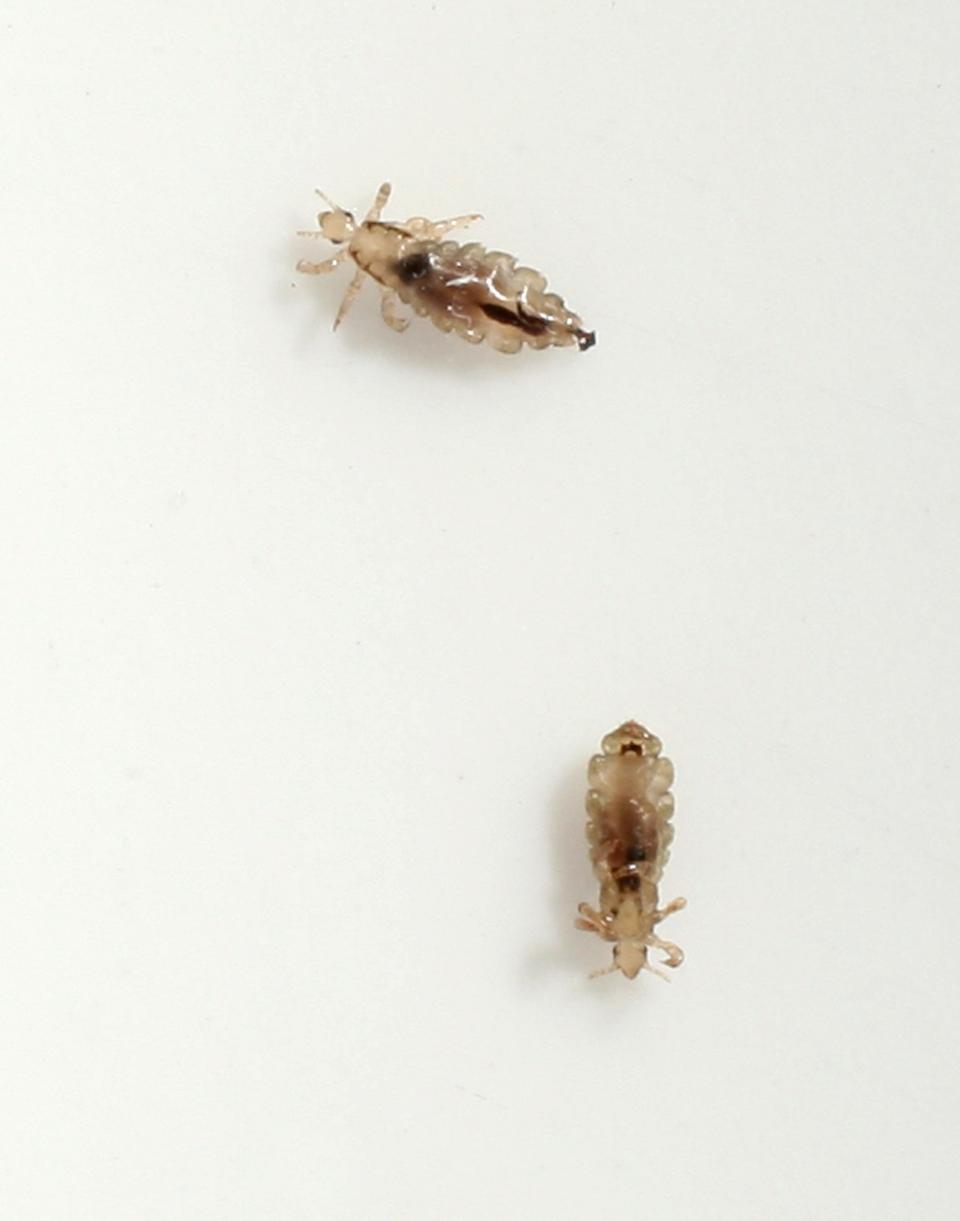How to prevent head lice before back to school starts

The back-to-school season, as exciting and relieving as it can be for parents, also means the start of the dreaded lice infestations.
It's estimated that around 12 million cases of head lice infestation are reported in the U.S. every year, with some studies showing that just under 20% of all schoolchildren will have lice at some point in their lives.
While lice are not necessarily dangerous, they are a hassle. Before the school year begins, here is what to know and watch out for.
What are lice?
Lice are small, wingless insects that feed on human blood for four to six hours a day. Adult lice are around the size of a sesame seed, with six legs and a tan to grayish-white color. They thrive under hot and humid conditions, similar to that of the human scalp, where they spend their entire lifetimes.
Understanding the life cycle of lice is important in preventing their spread. Head lice have three stages of life in their roughly 30-day lifespan: nit, nymph and adult.
Nits are lice eggs. Every day lice lay around four to five eggs close to the scalp for warmth. Nits are much smaller than adults and are typically mistaken for dandruff or hair spray droplets with their yellow to white color. They take around one week to hatch, which is important in the treatment process.

When a nit hatches, a nymph is released and leaves its shell behind. After the egg is hatched its color changes to a more visible dull yellow color and remains stuck in the strand of hair. After around a week, nymphs become blood-thirsty adults who die within one to two days without human blood.
Morre bugs to avoid: Bed bug season is here. How to identify risks and avoid an infestation
What are the symptoms of lice?
Children aged 3 to 11 have the highest incidence of head lice, especially when they are in close contact with other kids. Lice are slightly more common in kids with longer hair and are transmitted through close head-to-head contact or the exchange of hair brushes, hair ties, hats or other accessories.
The most common symptom of head lice is intense itching of the scalp. However, in a first infestation, it may take up to four weeks for patients to notice the itching.
How to avoid lice
Preventing a lice outbreak may be difficult, but the best method is to teach your children not to share things that come into contact with other children's heads.
Lice have been pests to the human head for millions of years, and in that time, myths and misconceptions have spread just as quickly as the lice themselves.
The misconception that lice can live only in "dirty" hair is not true. Personal hygiene and cleanliness have nothing to do with getting head lice. Lice will target anybody with hair, but it may be true that they have a harder time grasping curlier or shorter hair.
Can your pet give you lice?
Head lice as we know them feed only on human blood. Lice on dogs or cats or any other mammal will feed only on that specific species.
Do head lice spread to the rest of the body?
Head lice are distinct from body or pubic lice. While head lice may be able to infect your facial hair, eyebrows or eyelashes (albeit, very rarely), they can't move to any other part of the body. Lice are also not known to spread disease.
Bite care Want to know how to get rid of mosquito bites? Here is our treatment, prevention guide
Does mayo or olive oil kill lice?
Mayo, olive oil, petroleum jelly or other at-home treatments have the potential to slow the movement of adult lice and allow them to be combed out easier, but they do not kill the lice or stop the nits from hatching. Use Food and Drug Administration-approved treatments that can be bought over the counter.
How to treat lice
To check yourself or your child for lice, inspect their scalp under a bright light and separate the hair into sections to look for nits or adult lice. Nits cannot be removed from the hair as easily as dandruff can, and both are most commonly found in the hair behind the ears or around the nape of the neck.

If lice are found in your child's hair, the treatment process is relatively long and tedious. There are two over-the-counter treatments approved by the FDA: pyrethrin and permethrin. Both treatments kill only live lice, so they must be reapplied nine to 10 days after the first treatment to ensure that any nits that hatched between treatments are killed off.
Pyrethrin's brand names are found under A-200, Pronto, R&C, Rid and Triple X and are approved for children aged 2 and up. These treatments use extracts from the chrysanthemum flower, so it's not recommended to use if an individual has a known allergy to chrysanthemum or ragweed. Permethrin's brand name is Nix and is approved for children over the age of 2 months.
Both treatments typically involve lathering the shampoo into the hair and leaving it on for 10 minutes before rinsing. Afterward, use a lice comb (usually provided with the purchase of shampoo treatment), to comb through the wet hair and remove the leftover lice or nits. These products should be applied to a fully dressed person and rinsed out either with a spray hose or in a sink, not the shower or bath, to limit the amount of skin the lice can touch or reinfect.

After eight to 12 hours, check the hair again. If the treatment worked, there should be few to no live lice left in the hair. Some live lice may still be there, but as long as they aren't as widespread or active, the medicine should kill them within a day or two. Any remaining lice can also be combed out of the hair again.
If the treatment is working, avoid washing the hair for at least two days to let the medicine work and repeat the process about seven to 10 days later. Continue to comb through the hair once a day for about three weeks to ensure that no lice or nits are left behind. In between brushes, soak the lice combs in hot water (around 130 degrees Fahrenheit), for at least 10 minutes.
If after treatment, lice still seem as active as they were before treatment, talk to a dermatologist or doctor who may have to prescribe stronger medication.
More lice treatment tips
Follow instructions on the medication's label; do not use extra lice medication unless instructed by a doctor to do so.
Avoid the treatment's contact with skin as much as possible. If it comes in contact with the eyes, flush them out with water immediately.
Do not treat an infested person more than two or three times with the same medication.
Do not use different types of medication at the same time.
Wash hair out with warm water instead of hot water.
How to prevent lice from spreading in the home
All members of the household should be checked if one person is infected with lice, but treatment is not necessary unless lice are found.
After the hair treatment is complete, there are still steps that need to be taken to protect other items in the house. Machine wash all clothes, sheets, pillowcases, blankets and anything the individual's head may have touched and make sure to seal non-washable items like stuffed animals in plastic bags for two weeks.
Also, make sure to vacuum carpets and furniture to remove any infected hairs from the area. Do not use lice-killing sprays or other insecticides on your furniture, as the chemicals can cause more harm.
Do I tell my kid's school?
School policies when it comes to preventing the spread of head lice vary. Information about protocols for head lice can usually be found on the webpage of your school district or day care center.
However, the Centers for Disease Control and Prevention recommends that children diagnosed with live head lice do not need to be sent home early from school. They can go home at the end of the day and return to classes after the first treatment is done.
The "no nit" policies that some schools used to have, which required that children be free of nits before returning to school, are largely outdated and have been discouraged by the American Academy of Pediatrics and the National Association of School Nurses.
Not all school districts are required to notify the parents of other classmates if one student is found to have lice. That's why it's important to be proactive in checking your child's head and understanding what your school district's policies are before your child goes back for the year.
Contact Molly McVety at mmcvety@delawareonline.com. Follow her on Twitter @mollymcvety.
This article originally appeared on Delaware News Journal: How to find, treat and avoid head lice before the school year

